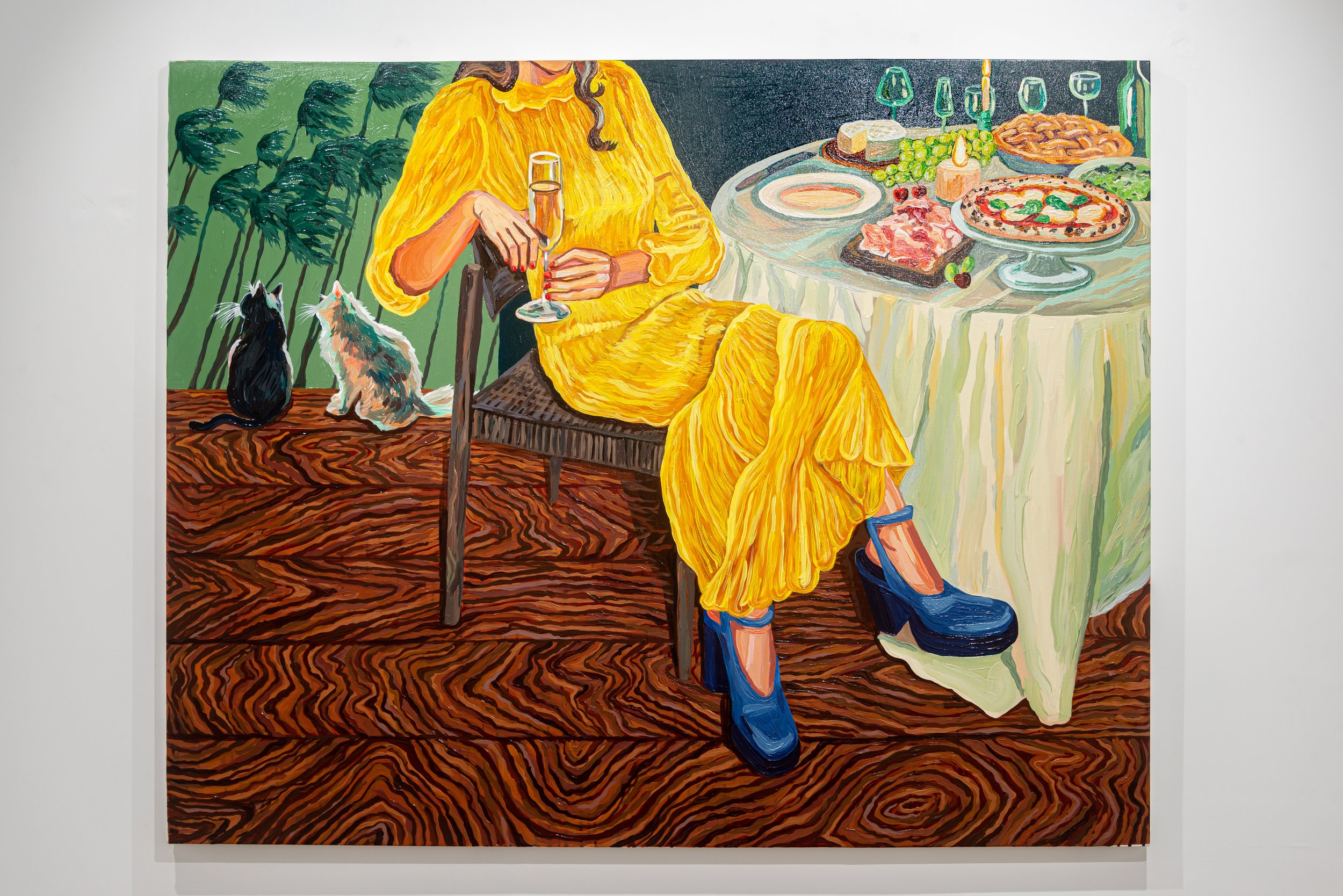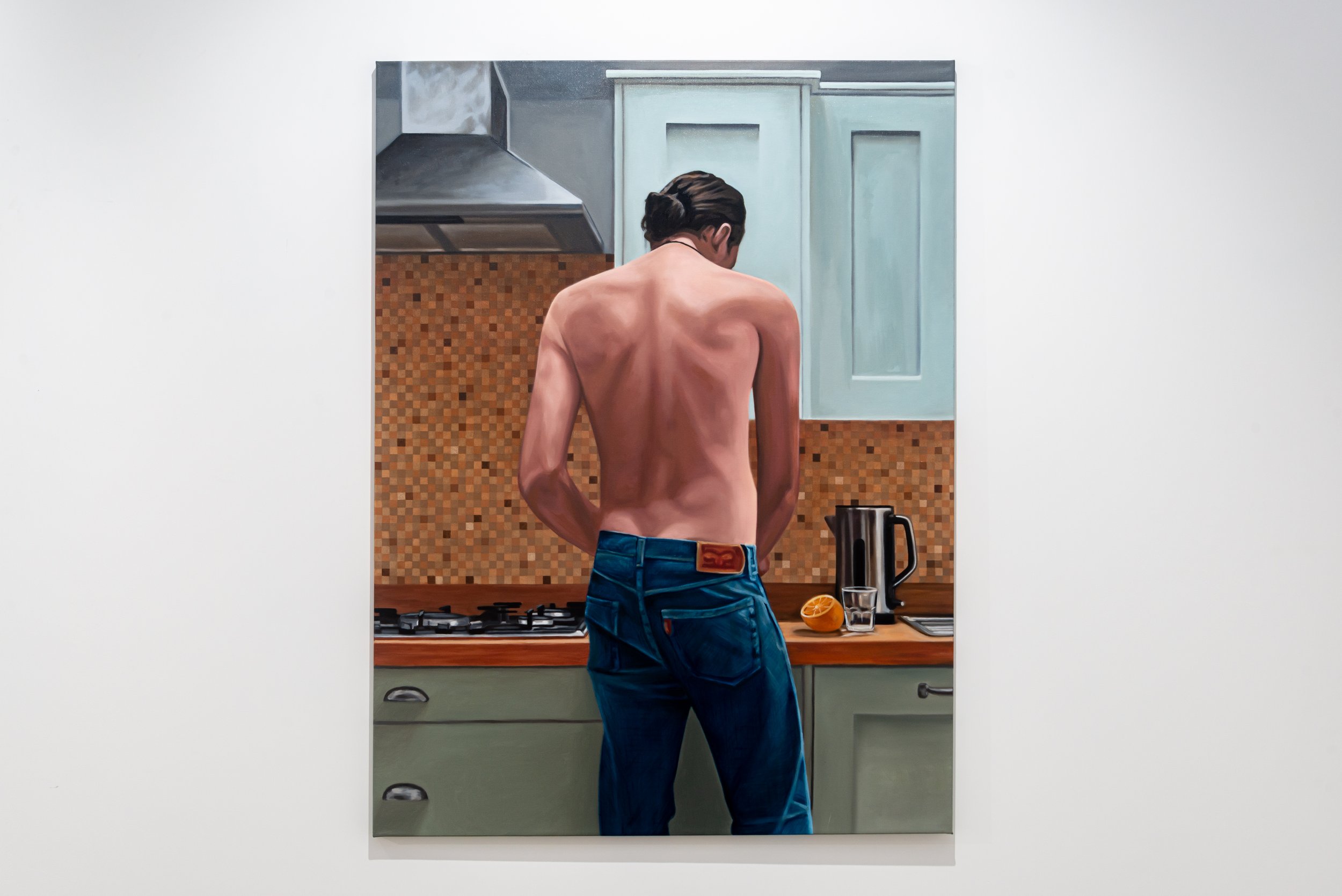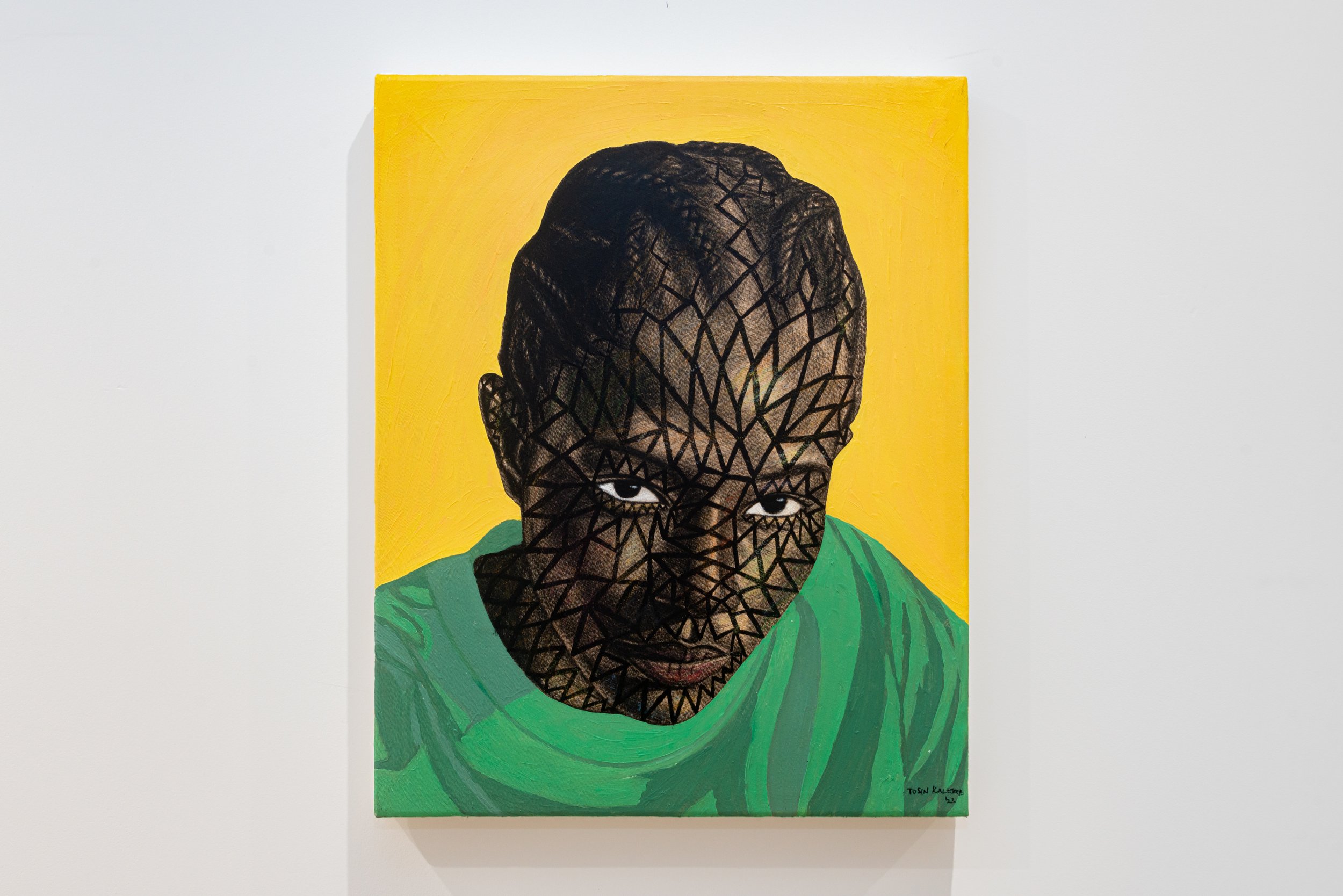Only Until This Cigarette Is Ended @ Pictorum Gallery - featuring an exclusive with Johanna Bath
“Only until this cigarette is ended,
A little moment at the end of all,
While on the floor the quiet ashes fall,
And in the firelight to a lance extended,
Bizarrely with the jazzing music blended,
The broken shadow dances on the wall,
I will permit my memory to recall
The vision of you, by all my dreams attended.
And then adieu,—farewell!—the dream is done.
Yours is a face of which I can forget
The color and the features, every one,
The words not ever, and the smiles not yet;
But in your day this moment is the sun
Upon a hill, after the sun has set.”
– Edna St. Vincent Millay
Written in the early 1900s, the haunting words in the sonnet of the great American lyrical poet, Edna St. Vincent Millay, find new meaning in Pictorum Gallery’s eponymous exhibition.
Exterior view of Pictorum Gallery. Courtesy Pictorum Gallery.
Throughout the poem’s fourteen lines, the reader is taken on a journey through the speaker’s internal dialogue in which she explores the emotions surrounding her romantic relationship. Rather than describing the growing flames of her passion - a theme typical of this style of poetry - Millay’s speaker alludes to the disintegration of love, which, with each puff of the cigarette, turns into ashes that have fallen to the floor and cannot be recovered. Using old-fashioned Elizabethan syntax and the structure of traditional Italian sonnets infused with contemporary references to cigarettes and jazz music, Millay infuses the past with her present.
The exhibition’s curator, Josephine Bailey, said of the poem, “[the poem] feels like such a Romantic and almost old-Hollywood way of measuring time,” referring to Millay’s burning cigarette metaphor. Indeed, the ‘old-Hollywood’ essence, the intersection of enduring themes of nostalgia and the dissipation of love, and Millay’s curated blend of periods through rhythm and word choice are perfectly visualised in the works of the exhibition’s nine international artists – Leily Moghtader Mojdehi, Tosin Kalejaye, Naomi Boiko, Olamide Ogunade, Elena Rivera-Montanes, Verde, Nina Baxter, Johanna Bath, Brittany Fanning.
Group hang installation image. Courtesy Pictorum Gallery.
Each artist brings something new to the table.
Two large acrylic-on-canvas works by the Los Angeles-based painter, Brittany Fanning, visualise Millay’s opening quatrain through her brightly coloured party scenes. Storm Party (2023) is especially inviting, with its central figure wearing a vivid yellow pleated dress paired with a pair of complimentary ultramarine Mary-Jane heels.
Nursing a glass of champagne and surrounded by a heaving buffet of American cuisine staples such as pizza and pie, the woman appears caught in a quiet moment with her two cats staring out at the wild storm outside. But, with her head cropped from the picture, it is uncertain whether she is enjoying this minute of stillness before her guests arrive and the celebration begins or whether she is impatiently waiting for the latecomers and a party that may have been exquisitely planned but will never transpire. Applying Millay’s cigarette reference literally, perhaps the hostess’ glass of bubbly has gone flat…
Brittany Fanning, Storm Party, 2023. Acrylic on canvas, 152.4 x 121.9 cm. Courtesy Pictorum Gallery.
Likewise, Nina Baxter’s Small Gestures of Love portrays a quiet moment within a domestic setting with the subject’s identity obscured from view. By contrast, her picture is much more intimate than Fannings; set in the kitchen, the shirtless subject is caught cutting up an orange on the countertop whilst Baxter, his romantic partner, watches. Whilst this may be viewed as a tender private moment, a subtle melancholic essence permeates the canvas, as if it may be the last time she sees him carry out this act. The second quatrain in Millay’s poem may well apply here. Relating to the two together, Baxter attempts to immortalise her partner’s body and the surrounding environment in paint but has already begun to remove his identity from her mind.
Even her small culinary still lifes – I Named Him After You (2021) and Subject of My Daydreams (2023) – are evocative of this with their nostalgic titles and references to the living and growing, and dead and consumed, respectively. Their position at opposite ends of the gallery’s picture wall only seems to confirm this transition.
Nina Baxter, Small Gestures of Love, 2023. Oil On Canvas, 75.8 x 101.4 cm. Courtesy Pictorum Gallery.
Straying from the concurrent combinations of food, animals, and the self, Tosin Kalejaye’s cropped portraits are as enigmatic as they are striking. In a similar vein, Olamide Olagunade’s pictures, with the surreal layer of bubbles that covers the charcoal and acrylic canvas, the self-taught Nigerian painter imbues his portraits with a signature pattern that modernises and reinvents the traditional portrait.
Here, an interlocking web of triangles covers any exposed skin areas – the face, the hands, the neck – created in black charcoal. In distorting the subjects by adding a geometric-patterned skin or a layer of bubbles, both Kalejaye Olagunade put a certain distance between the spectator and the subject. Perhaps this is a memory distorted or tainted by separation? However, unlike Millay’s partner, whose face is quickly forgotten, these portraits are most definitely memorable.
Tosin Kalejaye, Face Card II, 2023. Mixed media, oil, oil pastel, and charcoal on canvas, 40.6 x 50.8 cm. Courtesy Pictorum Gallery.
Installation shot featuring Tosin Kalejaye, Portrait of Momodou, 2023. (Mixed media, oil, oil pastel, and charcoal on canvas 83.8 x 101.6 cm.) Courtesy Pictorum Gallery.
One of the most indelible features of the exhibition is easily the two hand pictures – Blank (2022) and The Present (2022) – by German painter Johanna Bath. Due to their position facing the exhibition entrance side-by-side on their own wall, if one is looking directly ahead, the first thing spectators are greeted with is the image of tenderness and intimate touch. For Bath, hands and hand-holding are an incredibly poignant element within her artistic practice, which explores the passage of time and memory.
Installation shot. Left: Johanna Bath, Blank, 2022. Oil on canvas 50 x 60 cm. Right: Johanna Bath, The Present, 2022. Oil and acrylic on canvas 50 x 60 cm. Courtesy Pictorum Gallery.
Referring to the inspiration behind these works, she recalls one of her favourite romantic moments that she experienced as a teenager, where a boy she liked held her hand for the entirety of a party they attended together. Noting how she remembers thinking this was “one of the most romantic things ever,” she finds herself being drawn back to this subject time and time again. Hands, to Bath, are a means to tap into memories she was, until last year, afraid to explore in her work as they act as “a little gap between imagery and my point of view… [they] invite the viewer into very intimate memories.”
Johanna Bath, Green Bouquet, 2023. Oil on canvas, 40 x 50 cm. Courtesy Pictorum Gallery.
Her unique painting style and light colour palette also express this sense of distant intimacy. Always wanting to keep an element of mystery and femininity in her works, Bath employs a rich range of pastel colours that are as inviting as they are delicate. Carefully blended by an acrylic glaze applied on top of still-wet oil paint, the picture’s patina is softly blurred to create a barrier between her memories and present self or the spectator. “I felt like this [effect] adds to the theme of memory and time and the fleetingness of time,” she says, “because [the blurriness of the picture] is the same with memories.” Of this, she says, “It's impossible to go back and remember everything. The pictures create the same sensation that you never get the full image again.”
But, the addition of several punctuation marks rendered in a bright mint green colour in Blank disrupts the glaze’s hazy effect. The contrast between the sharp stencil lines and the blurred image of the hands only adds greater visual interest to the picture, and it also imbues it with an extra element of mystery that Bath always seeks to include in her pictures.
This effect is even more significant in A World Reflected IV (2023). Depicting the cropped image of a woman’s face, a small ochre dot is positioned just beneath her eye, like a miscoloured forming teardrop or beauty mark that draws attention to this particular facial feature. Recalling how when “ you stare into each other's eyes, it takes like five seconds, and your thoughts drift away,” she aimed for this work to “take you somewhere else” through her mysterious melancholic expression.
Johanna Bath, A World Reflected IV, 2023. Oil on canvas, 40 x 40 cm. Courtesy Pictorum Gallery.
More than this, Bath’s distinct focus on incredibly subtle expressions of human emotion and human interaction highlighted through these works produces feelings and images that are totally universal. By zooming in on these delicate moments, Bath makes her works accessible to any viewer, highlighting how she feels, “love is the biggest motivator and inspiration.”
Indeed, love is the lynchpin of each artist’s practice and the crux of the exhibition. Whatever love the artists explore – lost love, forgotten love, nostalgic love, or love turned cold – each presents its endurance through time in a profoundly contemporary manner that is both thrilling and thought-provoking. Fundamentally, Pictorum presents an exhibition that will take spectators on a journey through the persistence of love through time. But its success lies in that this is a journey entirely dictated by the spectator’s own experiences rather than one that is thrust upon them.
Only Until This Cigarette Is Ended is on view at Pictorum Gallery from July 13, 2023 until August 11, 2023.
Many thanks to Pictorum Gallery for allowing MADE IN BED exclusive pre-opening access to the exhibition and to Johanna Bath for all their contributions to the article.
To learn more about Pictorum Gallery, see their website and Instagram. To learn more about Johanna Bath, see her website and Instagram.
Ilaria Bevan
Editor in Chief, MADE IN BED










